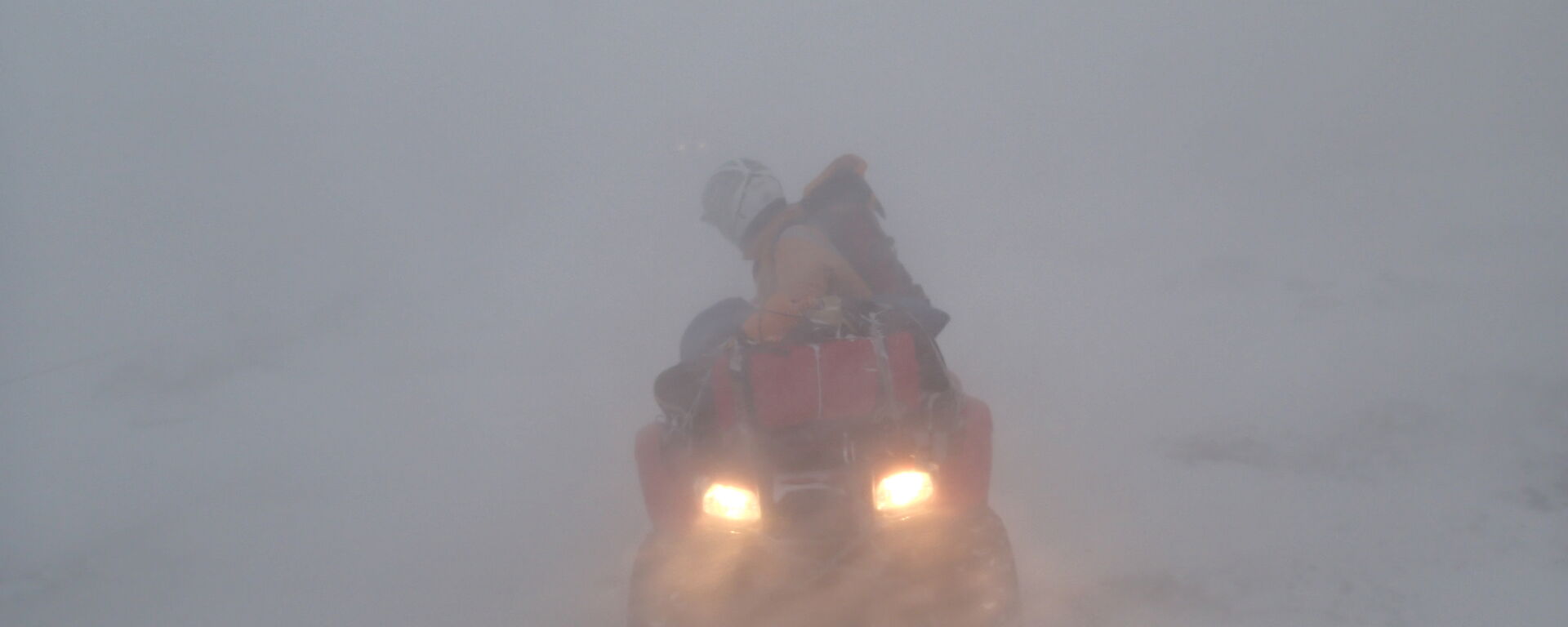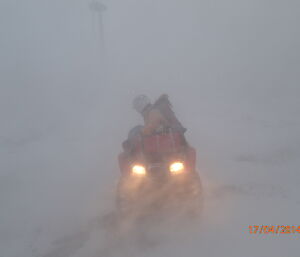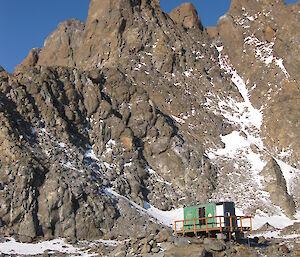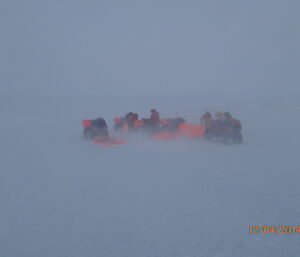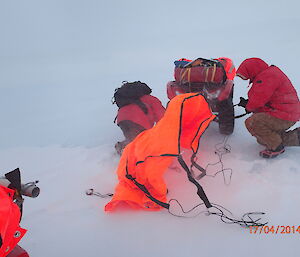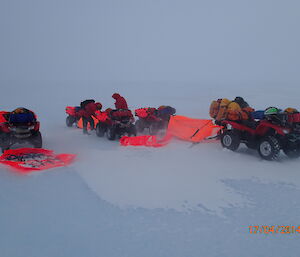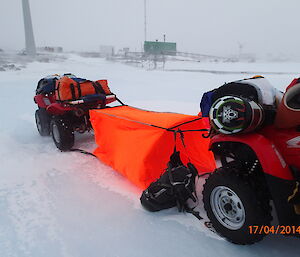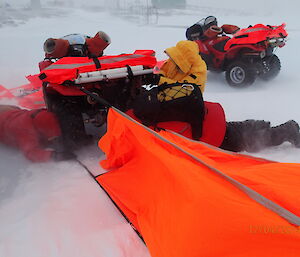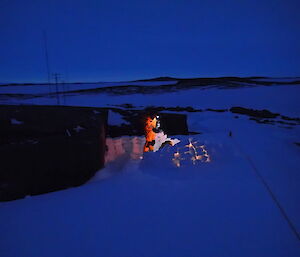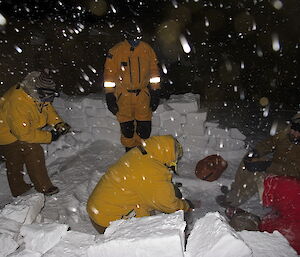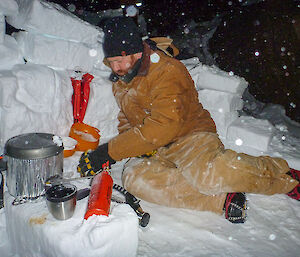It has been a busy two and a half weeks since resupply with all expeditioners now having completed their survival training. The training involved travelling up and onto the plateau on quad bike, navigation and route finding using both map and GPS, quad bike recovery, setting up a quad bivvy between two bikes, and securing several quad bikes together in a blizzard which culminated in an overnight bivvy (camp out) in −20°C and colder. Below are a few excerpts from a couple of expeditioners writing about their experience in the Antarctic wilderness.
Matt Price — Met Observer
Good to get off station and see further afield over a couple of days last week while participating in survival training and quad bike training. That being said, for periods of both days, many of us had difficulty seeing anything at all with fogging up of glasses, goggles and helmet visors. Hopefully once we get more familiar with our clothing everyone can find a setup that ‘works’ for them. The highlight of the first day was getting to Rumdoodle hut. We didn’t spend very long there but it has left many of us looking forward to the opportunity to stay overnight at the huts once our training progresses. Conditions on the second day were poor with overcast conditions causing flat light, making surface definition poor with no visible horizon. As the conditions approached whiteout, the decision was made to return to station. It was good to see how weather conditions can differ up on the plateau compared to at station on the coast.
Heidi Godfrey — Field Training Officer
A bivvy-out they say? There were a few groans and some enthusiasm as you would expect, to the idea of sleeping out in the elements when there was a perfectly warm bed and hot shower not so far away.
Short notice is given to Greg, James, Aidan, Ewan and Jens that to complete all aspects of survival training they are required to bivvy-out. As a field trainer, I think of my job is being able to sell an idea as much as what my job description details. So with “Ahh, get it done this week as it will be only getting colder next week” our posse of five headed out to West Arm with our survival packs complete with a dehydrated meal and pee bottles.
We worked on skills such as building a survival shelter, setting up a good kitchen, getting a hot brew going, making water, securing camp and, top tips and tricks on how to have a better night out in the elements. A walk out to the end of West Arm warmed the crew up nicely before retiring to our bivvies. A beautiful starry night and a steady 20 knots made our night a cold but comfortable experience.
After packing up and filling in our night’s accommodation, we headed back to station. Words such as warm, comfortable, enjoyable and the phrase “didn’t have to get up to pee”, were bantered around with smiles on faces.
James Chappell — Doctor
Last Thursday the 10th of April, as part of our survival training, five Mawsonites joined our FTO Heidi for an overnight bivouac. We undertook the venture later in the season than is usual and this resulted in conditions being extremely cold and windy, instead of just cold and windy. Fortunately it was not really badly extremely cold and windy, because then we would not have been able to go outside at all. Nevertheless, it was cold enough for Heidi to warn us that the nuts in our chocolate would effectively turn into teeth breaking rocks.
Three of us, including myself, had never slept outside in Antarctica before. The other two are evidently less sensible. One first timer was a Tasmanian and as such seemed almost at home with the sub zero conditions as did the Kiwis. Nevertheless, like myself, he soon discovered that Sorells (outdoor Ugg boots) fail at −20°C and consequently he and I jogged up and down and engaged in a spot of aerobics, rather than remain idle and risk frostbitten toes. Baffin boots are obviously the way to go!
Fortunately for our toes, there was also plenty of work to be done to keep us warm. We cut snow bricks with ice saw and shovel and used these to build the walls for our kitchen and two person sleeping bivvies. You soon learn in Antarctica that it is the wind and not so much the temperature alone that strips the heat from you and bites at your face when you turn into it. It is amazing how effectively a wall made from snow blocks to shield a 20 knot wind can reduce your body’s heat losses.
After setting up camp, we all enjoyed a nice cup of tea before dinner. This was made from melting snow on our camping stoves. A handy tip is to remember: always keep some water available, as snow will not melt in these conditions unless it is mixed with a little liquid to start the process. Alternatively, you may find that your tea has acquired a yellowish tinge and an ammonia like quality?
Dinner consisted of dehydrated rations, which were again reconstituted by making hot water from snow. Unlike fresh meat, its dehydrated cousin is more chewy the less well done it is and it takes on the not so unpleasant consistency of a twisty that has been left out in a bowl on the bar overnight (not that a twisty would ever last this long at Mawson). Actually it is pretty tasty and I’d say we have come a long way from seal blubber and penguin meat!
After dinner we all went for a brisk walk to warm up before getting into our sleeping bags, on our foam mats, within our bivvy bags, behind our walls of snow blocks. We were all advised to change into fresh dry socks and to go to the toilet before bed rather than battle the discomfort of damp feet and a full bladder in the middle of the night. In bed I ate chocolate and even read a few chapters of my novel by head torch before falling soundly asleep. Evidently we all did a pretty good job, because we were all toasty warm and slept the whole night through!

